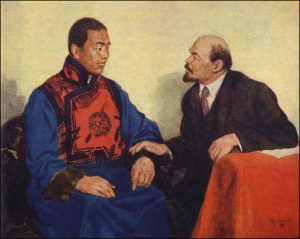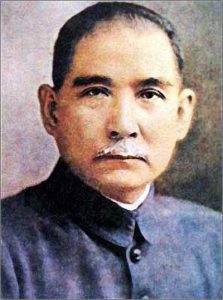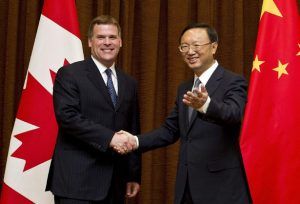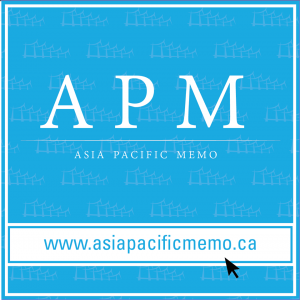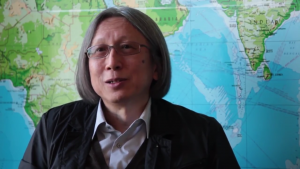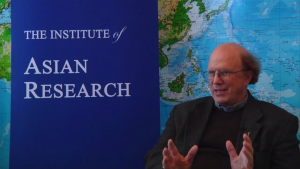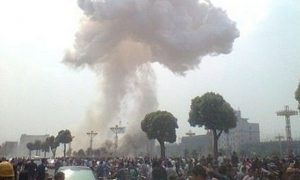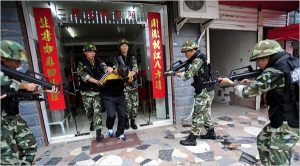The Middle Mountain of the Xinhai Revolution
Memo #104 – Growing up in Canada, my relatives would always remind me that my family came from the same county as Dr. Sun Yat-sen, the “Father of China”, when I was picked on by other kids because I was Chinese. This seemed like cold comfort. But it turns out that my relatives understood the relationship between the rise of modern China and the role of the overseas Chinese.
The Xinhai Revolution and Counter Revolution on the Frontiers of Republican China
Memo #103 – The Xinhai Revolution of 1911 and the subsequent founding of the republic sought to remould China as being composed of five nationalities: Han, Manchu, Mongol, Tibetan, and Uyghur. This vision of a multi-ethnic nation had no appeal to Tibetans and Mongols. .In divergent ways, the Xinhia revolution created an opportunity for China, Tibet and Mongolia to creat a modern nation state.
The Democracy Card
Memo #102 – The goal of the Xinhai Revolution, for its leaders, was to establish a democratic republic in China. Working out how to celebrate the centenary of the revolution on October 10, 2011 has not been easy. The republican ideal has been achieved, but in most of the Chinese world, democracy has not. Only the Republic of China (ROC, or Taiwan) and Singapore have full democracy. Hong Kong has a free press, rule of law, and limited elections. The Peoples’ Republic of China (PRC) has virtually no democracy, despite the many rights and freedoms listed in the constitution.
Getting Global China Right – Public Fears and Conservative Policy
Memo #99 – The world is being reshaped by China’s rise, its central role in regional production networks and global value chains, its deepening influence in international institutions, and the persistence of its particular form of authoritarian capitalism. Decisions of Chinese officials, business leaders, citizens, and consumers have impact globally in a messy, multi-centric world order.
Through Taiwan is the Shortest Route between Japan and China
Memo #98 – Joint ventures between Taiwanese and Japanese firms in China survive longer than companies formed only with Japanese capital. Research shows that Japanese firms have a better chance of success in China through alliances with their Taiwanese partners. The survival rate (which measures firms or joint ventures started in the 1990s up to the year 2005) in China has been around 68 per cent when Japanese companies entered the market alone. But the rate is 10 per cent higher if they worked with Taiwanese corporations. Taiwan can play a critical role in trilateral relations and create a win-win-win environment.
Author Chan Koonchung on His Role as an Activist Public Intellectual
Memo #95 – On June 28, 2011, we published our first interview with Chan Koonchung (陈冠中), the author of the novel Shengshi-Zhongguo 2013 (盛世 – 中国 2013) or, The Fat Years. In this second installment he speaks about his role as an activist public intellectual. In 2010, he started an e-mail discussion group and NGO, Minjian China because he found that other Chinese intellectuals were not concerned with China’s impact outside of China, despite China’s role as a rising power. “Minjian” is one term for civil society. He has tried to identify scholars interested in China’s impact on the broader world, starting with Southeast Asia. He recently started a second online discussion group on China-India relations.
Re-examining China’s Periphery – Video Interview with Dr. Pitman Potter
Memo #93 – Pitman Potter’s recent book, Law, Policy, and Practice on China’s Periphery: Selective Adaptation and Institutional Capacity, examines the Chinese government’s policies and practices for relations with the Inner Periphery areas of Tibet, Xinjiang, and Inner Mongolia, and the Outer Periphery areas of Hong Kong and Taiwan.
Author Chan Koonchung on His Novel, Shengshi-Zhongguo 2013
Memo #92 – A noted cultural figure, writer, and public intellectual based in Beijing, Chan Koonchung (陈冠中) is the author of the pathbreaking novel Shengshi-Zhongguo 2013 (盛世中国 2013) or, The Fat Years. In this first of two interviews, he reflects on the implications of China becoming more wealthy and powerful. In 2008 he became convinced of China’s ineluctable rise and the prospect that it would soon be more advanced than Hong Kong and Taiwan. The novel is alive with characters and situations that speak tellingly and often in dystopic terms about what China’s future might hold.
Beijing’s Gamble: Preventing Social Unrest through Policy Reform?
Memo #89 – Two weeks ago three bombs went off at government offices in Jiangxi province. They were set by a farmer angered about his house being demolished. Local disputes remain common, especially over land. Inflation, particularly rising food prices, has raised social tensions and have sparked further protests. The leadership remains nervous.
China’s Counterinsurgency Strategy in Tibet and Xinjiang
Memo #88 – Separatist riots in Tibet in 2008 and in Xinjiang in 2009 demonstrated that Chinese authorities may be efficient at riot control. But the protests also indicate that China has not addressed the root causes of recurring ethnic unrest and deteriorating loyalty towards the Chinese regime among Tibetans and Uyghurs.

